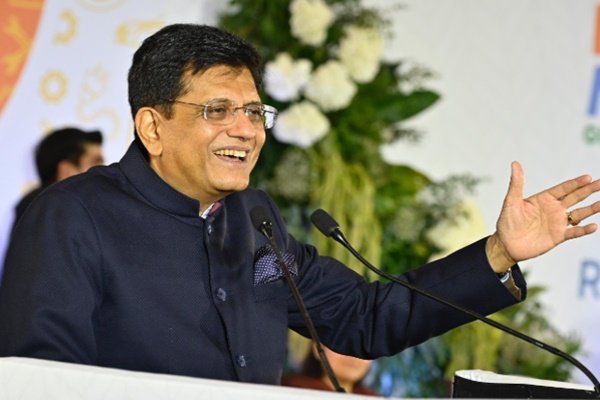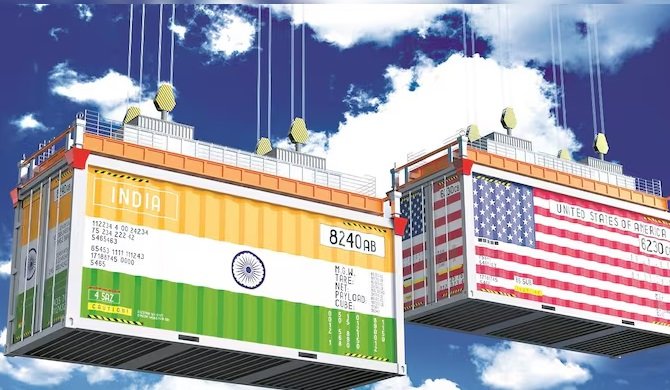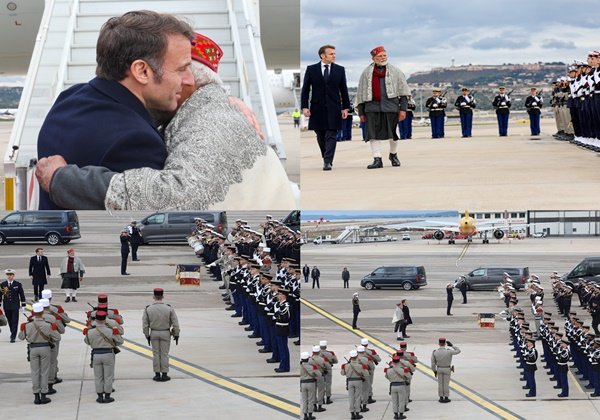Last Updated on July 31, 2025 9:19 am by BIZNAMA NEWS
R. Suryamurthy
India today firmly pushed back against US President Donald Trump’s “dead economy” remarks, asserting its position as the world’s fastest-growing major economy and highlighting its rapid ascent to a top-five global economic power. The strong rebuttal from Union Commerce and Industry Minister Piyush Goyal comes as the Trump administration announced a steep 25% tariff on Indian imports and additional penalties for India’s continued trade with Russia.

Speaking in both the Lok Sabha and Rajya Sabha, Minister Goyal emphasized India’s economic resilience and growth trajectory. “In less than a decade, India came out of ‘Fragile Five’ economies, and it has now become the fastest-growing economy of the world,” Goyal stated. He projected India to become the world’s third-largest economy in the coming years, a significant jump from its 11th position just over a decade ago. Goyal underscored that global institutions and economists now widely view India as a “bright spot” in the global economy, contributing nearly 16% to global growth.
US Tariffs and Sanctions: A Pressure Tactic?
President Trump’s aggressive stance includes a 25% tariff on all Indian imports effective August 1, alongside an unspecified “penalty” for India’s ongoing crude oil and defense equipment trade with Russia. Trump also criticized India’s tariff regime as “among the highest in the world” and its trade barriers as “strenuous and obnoxious.”
These moves are widely interpreted as a pressure tactic by Washington to extract trade concessions from New Delhi, following similar agreements secured with Japan, the UK, and the EU. Adding to the economic friction, the Trump administration has also sanctioned six Indian companies for purchasing Iranian-origin petrochemical products, part of a broader effort to isolate Iran.
India’s Response and Sectoral Impact
Minister Goyal assured Parliament that the government is closely examining the implications of these developments. “The Ministry of Commerce and Industry is engaged with all stakeholders, including exporters and industry, for taking feedback on their assessment of the situation,” he said. He reaffirmed the government’s commitment to safeguarding national interests and protecting the welfare of farmers, labourers, entrepreneurs, industrialists, exporters, and MSMEs.
Economists and industry bodies have begun to assess the potential fallout. Madan Sabnavis, Chief Economist at Bank of Baroda, estimated a potential 0.2% threat to India’s GDP, reiterating his forecast of 6.4-6.6% growth, with the lower end linked to the tariffs. Sabnavis highlighted that while the macro-economic impact might be limited, specific sectors exporting to the US would face significant challenges.
Key Sectors Facing Impact:
Garments and Apparel: Sudhir Sekhri, Chairman of AEPC, expressed disappointment but noted that the 25% tariff, while higher than expected, might be manageable if competitor nations like Vietnam and Bangladesh do not see a downward revision in their tariffs. The USA is a crucial market, accounting for 33% of India’s total garment exports in 2024. Exports of cotton T-shirts, women’s/girl’s dresses of cotton, and babies’ garments of cotton are particularly vulnerable.
Precious Stones: This sector will need to rework strategies to remain competitive.
Auto Parts: Indian auto parts manufacturers exporting to the US will face increased costs.
Leather Products: Similar to garments, the leather industry will need to adapt to the new tariff landscape.
Electronics and Pharma: While there’s uncertainty regarding electronics’ inclusion, the pharma sector might see separate dispensations, offering some relief.
Sabnavis also pointed out that many of these impacted sectors fall under MSMEs, suggesting a need for government “handholding” to enhance their cost competitiveness.
Industry Reactions and Path Forward
The Federation of Indian Chambers of Commerce & Industry (FICCI) expressed disappointment but conveyed hope for a swift resolution. Harsha Vardhan Agarwal, President of FICCI, stated, “While this move is unfortunate and will have a clear bearing on our exports, we hope that this imposition of higher tariffs will be a short-term phenomenon and that a permanent trade deal between the two sides will be finalised soon.”
India and the US have been engaged in negotiations for a bilateral trade agreement (BTA) since March, with the aim of finalizing the first phase by October-November 2025. Despite the current tensions, both sides have held several physical and virtual meetings.
Minister Goyal reiterated India’s commitment to prioritizing national interests over meeting deadlines in trade negotiations, emphasizing the goal of securing a mutually beneficial pact rather than a hurried deal. He also highlighted India’s proactive engagement in “mutually beneficial” trade agreements with other nations like the UAE, UK, Australia, and EFTA countries, signaling a diversified trade strategy in an increasingly protectionist global environment.
The government remains confident in India’s continued journey towards inclusive growth and sustainable development, with the overarching goal of achieving “Viksit Bharat 2047” (Developed India 2047). The coming weeks will be crucial as India navigates these trade challenges and continues its dialogue with the US to mitigate the impact of the new tariffs.




